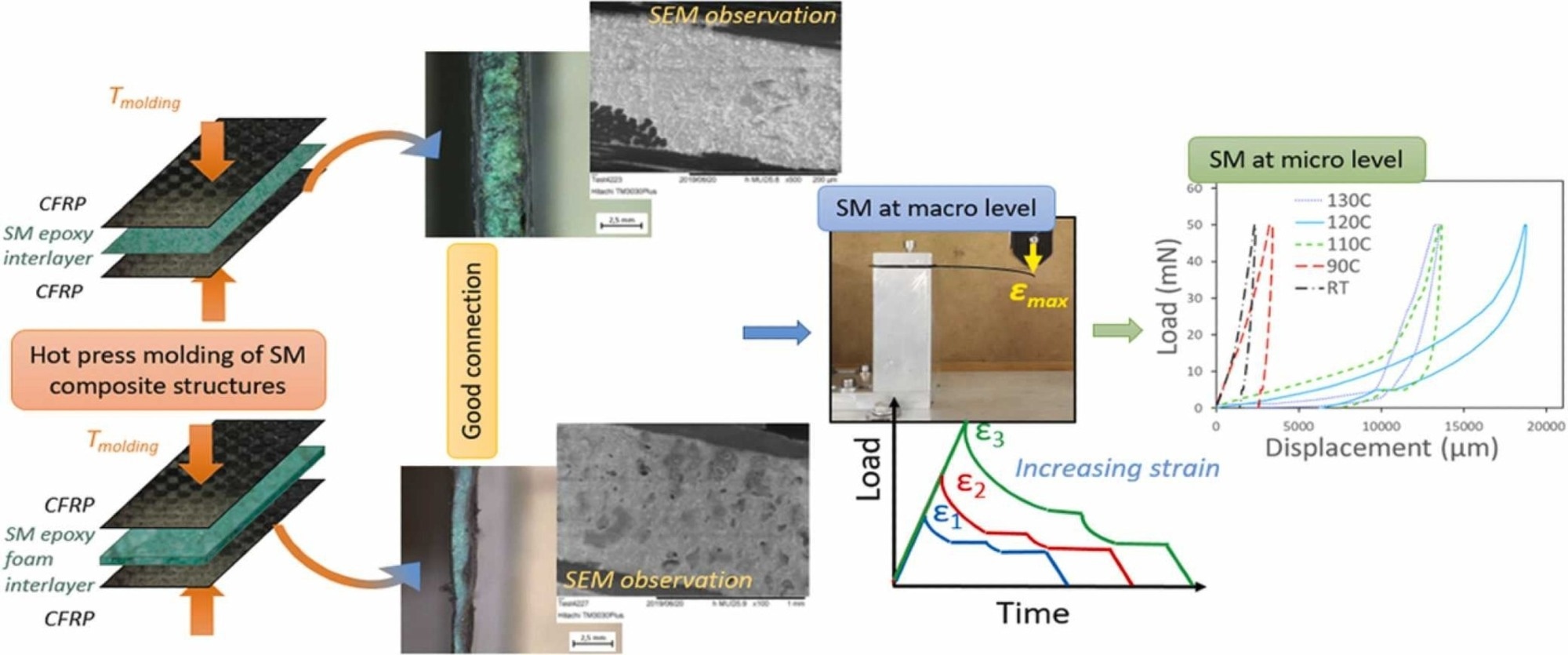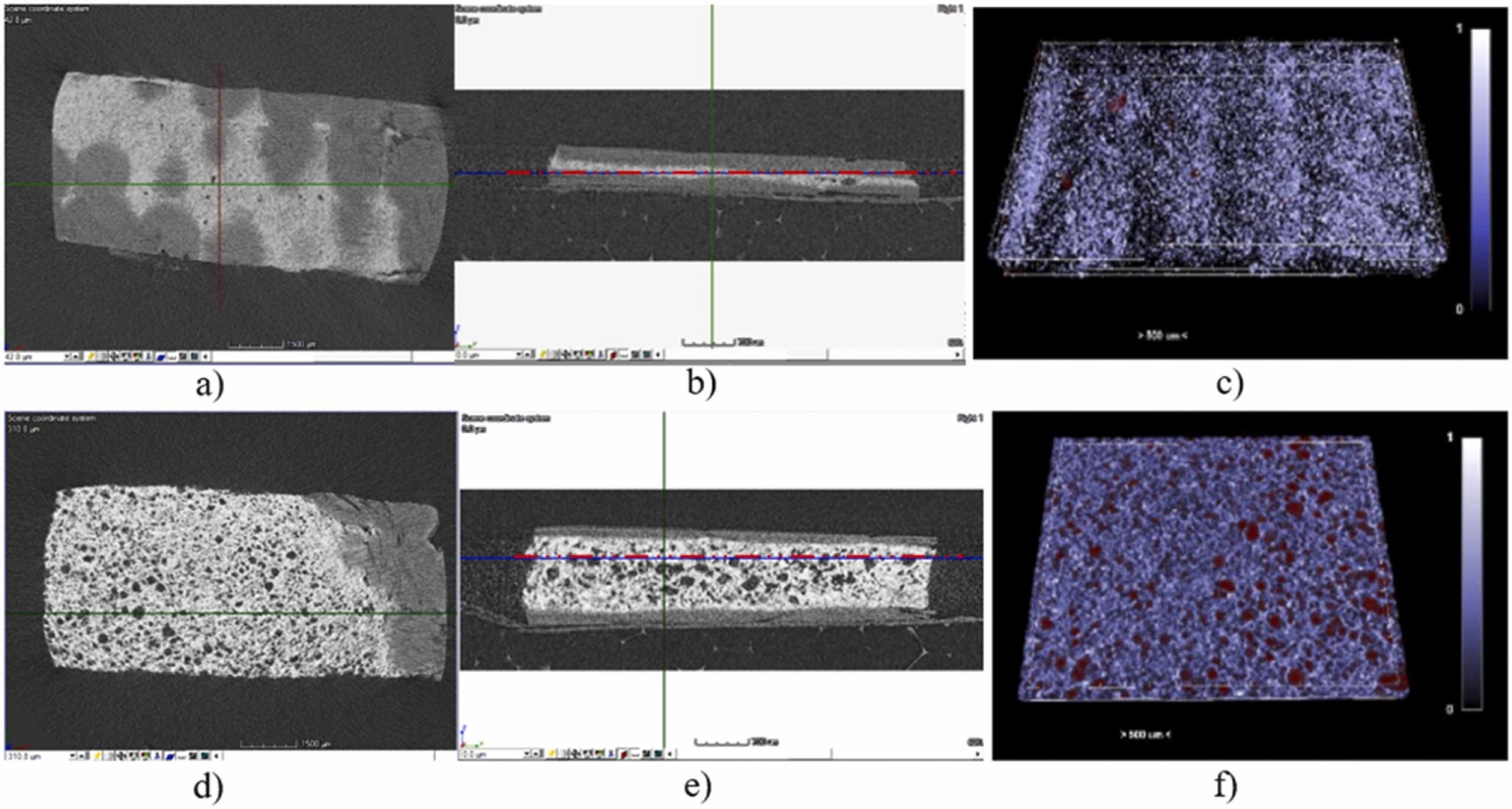In a study published in the journal Materials Today Communications, analysis was conducted on shape memory polymeric composites (SMPCs) made from industrial substances previously utilized in aerospace. The findings enabled the identification of recovering processes at the microscopic level crucial for shape memory capabilities at the macroscopic level.

Study: Microscopic testing of carbon fiber laminates with shape memory epoxy interlayer. Image Credit: Bellisario, D., et al (2022)
Shape-Memory Polymers – A Mainstay in the Future of Several Industries
Shape memory polymeric composites (SMPCs) belong to a class of smart material architectures that can distort and restore their original shape when stimulated.
In thermally stimulated architectures, the glass transition temperature (Tg) may be utilized to tune the fixing phase and the original shape's recovering qualities. Interest in these smart materials is high in various industries, including biomedical and aeronautical fields, where the use of actuation is critical.
Shape Memory Behavior – Nobody Does It Like Polymers
Shape memory (SM) response in carbon fiber is often obtained by adding a polymeric framework having SM features. Shape memory polymers (SMPs) may withstand greater deformations than shape memory alloys (SMAs), even when a smaller actuating force is required to regain the baseline undeformed state.
Depending on the function needed, a suitable polymeric framework might be used. Generally, thermosetting resins have superior shape memory characteristics compared to thermoplastics, and epoxy resins often give the highest performance.
Epoxies have outstanding thermal and mechanical qualities and are widely employed in all production techniques utilized in high-impact sectors such as aerospace and automotive fields.
Main Objective of the Study
The use of thermo-mechanical cycling to measure the SM qualities is a common approach for evaluating the shape memory behavior of the SMP.
The shape memory behavior and interactions of the distinct layers at the nanometric scale have yet to be studied. This research aims to thoroughly analyze these smart materials on a microscopic and a macroscopic level, with a special emphasis on the resultant mesostructures.

a) Schematic of SMPC structures and b) procedure for SMPC samples manufacturing. © Bellisario, D., et al (2022)
Research Methodology
This work used compressive molding of industrially accessible materials to create two distinct shape memory polymeric composite structures appropriate for aeronautical usage. A large carbon-fiber cover made from commercially available thermosetting aerospace "prepregs" was evaluated for the first time for microscale shape memory behavior analysis.
The contribution of the shape memory interlayer by virtue of its architecture was examined on a microscopic level. The suggested composite laminations coupled the architectural properties of carbon laminations with the functionalities of SMPs. The shape memory layer sandwiched in between the two shape memory polymeric composite structures differed such that one possessed a thin coating of shape memory epoxy resin, while the second contained a shape memory epoxy foam.
The two systems were built to test the suitability of an aerospace molding method, such as compressive molding, in producing smart architectures for aircraft. This was a significant accomplishment for the research since most suggested novel shape memory polymeric composite materials in the existing literature could not be classified as aerospace-grade materials.

Micro-CT scan and analysis of the SMPCs a) cross sectional, b) side view and c) analysis of SMPC with epoxy powder interlayer and d) cross sectional, e) side view and f) analysis of SMPC with epoxy foam thin layer. © Bellisario, D., et al (2022)
Key Findings of the Study
MicroCT and SEM imaging demonstrated strong bonding among the carbon fiber reinforced prepreg (CFRP) layer and the epoxy interlayer, either in the form of a thin foam layer or a thin film. The homogeneity of the thin shape memory polymer interlayer created during compound lamination was emphasized by SEM imaging, with a very small level of porosity in CFRP layer shown by MicroCT assessment.
DMA studies revealed that shape memory interlayers influenced the transitional region, which narrows further when shape-memory resin is utilized. Nano-instrumented indentations and micro-indentations were used to analyze form restoration behavior at the microscale and nanoscale.
This was the first time the nano-instrumented approach was applied to this kind of shape memory polymeric composites, allowing the temperature for SM response to be calculated across a small region for both SMPC forms.
The SM behavior of shape memory polymeric composite structures was confirmed at the macro-scale using thermo-mechanical cycling with rising pressure and numerous thermo-mechanical cycles.
The SM polymeric composite with the thin epoxy foam sheet exhibited better shape memory capabilities, as predicted, given the foam architecture. SM polymeric composite with epoxy powder interlayer, on the other hand, exhibited lower yet impressive shape memory characteristics.
Recurrent thermomechanical cycling influenced SM behavior while maintaining the architectural integrity of the generated smart materials. Furthermore, an appropriate design of the kind and amount of shape memory epoxy interlayers could boost shape memory behavior significantly.
Reference
Bellisario, D., Quadrini, F. et al. (2022). Microscopic testing of carbon fiber laminates with shape memory epoxy interlayer. Materials Today Communications. Available at: https://doi.org/10.1016/j.mtcomm.2022.103854
Disclaimer: The views expressed here are those of the author expressed in their private capacity and do not necessarily represent the views of AZoM.com Limited T/A AZoNetwork the owner and operator of this website. This disclaimer forms part of the Terms and conditions of use of this website.